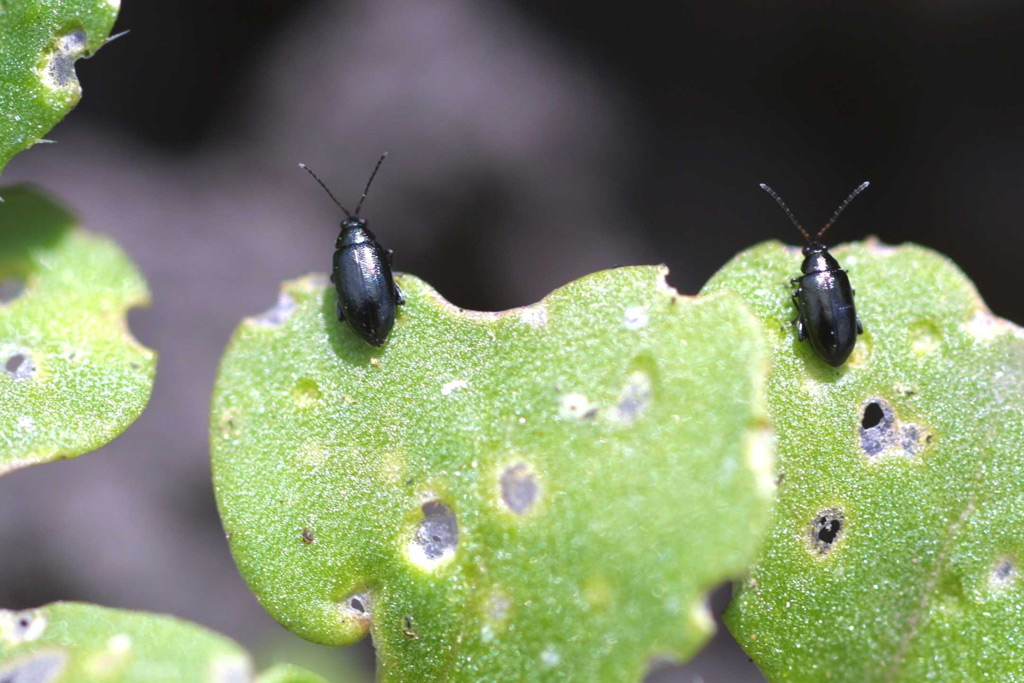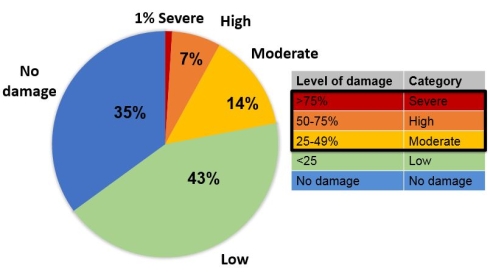Archives – February, 2016
From: Nature
- Nature 530, 132 (11 February 2016) doi:10.1038/530132a
- Published online 10 February 2016
The commercial trade in honeybees has helped to spread a deadly bee virus around the globe over the past century.

Stephen Martin, Univ. Salford
Deformed wing virus reduces the winter survival of European honeybees (Apis mellifera), and could be a factor in the large colony losses seen in some parts of the world. To find out how the virus became pandemic, Lena Wilfert at the University of Exeter, UK, and her colleagues analysed the virus’s genome to reconstruct its evolutionary and geographical history. The team found that the virus has spread from Europe in the past c…
February 11, 2016
From: FG Insight
About 1 per cent of the UK’s winter OSR crop was lost to flea beetle damage in the autumn, significantly down on 2014. But the figures do not undermine the case to retain neonicotinoids, say industry experts.
About 6,000 hectares of winter oilseed rape (WOSR) was lost as a result of adult cabbage stem flea beetle activity across the UK in autumn 2015, according to a survey by AHDB Cereals and Oilseeds.
In the second planting season without access to neonicotinoid pesticides for most growers, the estimated losses amounted to about 1 per cent of the WOSR crop, down from 2.7 per cent in 2014, albeit with a different methodology deployed by AHDB.
February 10, 2016
From: Otago Daily News
By Vaughan Elde
A spike in dead bumblebees around Dunedin is probably a natural phenomenon and nothing to be concerned about, a bee researcher says.
University of Otago geneticist and bee researcher Associate Prof Peter Dearden made the comments amid concerns on social media.
Read Complete Article
February 9, 2016
From: Radio New Zealand
Rachel Graham
A new report from British researchers shows that a deadly virus wiping out bee colonies around the world, was originally a bee virus but it is being spread by the varroa mite.

The researchers have tracked the global spread of the deformed wing virus, and say it came to New Zealand from Europe.
Alison Mercer, a professor of Zoology at Otago University, said there was an epidemic of deformed wing virus in hives across New Zealand now.
February 8, 2016
Editor’s Note: The University of Sheffield’s press release, “Honeybees under threat from virus spread by humans,” is available here.
From: Science Magazine | AAAS
Deformed wing virus is a recent global epidemic in honeybees driven by Varroa mites
L. Wilfert1,*, G. Long2, H. C. Leggett2,†, P. Schmid-Hempel3, R. Butlin2, S. J. M. Martin4, M. Boots1,‡
+ Author Affiliations1
- ↵*Corresponding author. E-mail: lena.wilfert@ex.ac.uk
-
↵† Present address: Department of Genetics, University of Cambridge, Cambridge CB2 3EH, UK.
-
↵‡ Present address: Department of Integrative Biology, University of California, Berkeley, CA 94720, USA.
February 5, 2016
From: USDA | National Institute of Food and Agriculture
Sonny Ramaswamy, Director, NIFA
Seeing President Obama’s fiscal year 2017 budget proposal and the strong commitment it makes to agricultural research reminds me of Dr. Consuelo De Moraes.
As a university researcher and panel manager of the National Research Initiative (NRI) competitive grants program, I called Dr. De Moraes in 2002 to inform her that USDA was going to fund her research proposal on determining how plants defend themselves against insects, so farmers could exploit the same as a means to control pests. She screamed with happiness. Later I learned that people heard the scream throughout the building at Pennsylvania State University. After that, Dr. De Moraes went on to great acclaim as one of the leading insect researchers.
February 4, 2016
From: Capital Press
Maui County has not been affected by varroa mites, which made their way to Oahu in 2007 and the Big Island in 2008.
WAILUKU, Hawaii (AP) — Maui County beekeepers have been exploring ways to keep bees healthy as the county remains one of the few places untouched by an invasive species known to attack the insects.
***
The Department of Agriculture is trying to find a solution to the pest problem in Hilo. Scientists have been using semen samples to breed a “varroa sensitive hygiene” bee that can better fight off varroa mite. Rusert said “it’s not the silver bullet,” but it will help beekeepers in the area to produce stronger, more resistant hives.
Read Complete Article
February 3, 2016
From: Farming UK
Adult cabbage stem flea beetle damage observations published by AHDB

Winter oilseed rape (WOSR) crop losses associated with adult cabbage stem flea beetle activity in autumn 2015 have been estimated at around 1% (6,000ha).
The losses are less than those estimated during autumn 2014, which suggested that 2.7% of the crop area was lost at that time.
However, as different methodology was used, care has to be taken when making direct comparisons.

Read Complete Article
February 2, 2016
From: Ohio’s Country Journal
By Anne Dorrance and Pierce Paul, Ohio State University Extension
Much of Ohio’s soybean production ground is on soils with poor to fair drainage, high clay content, and reduced tillage systems. Any one of these factors alone or in combination contributes to the environmental conditions that favor infection of seeds and seedlings by watermolds. Reduced tillage systems favor pathogen build-up in the very place that the seed is planted each year. Both soybean and corn are attacked by a great diversity of Pythium spp.; some of which are favored by cool, wet soil conditions and others by warmer but also wet soil conditions. Of course for soybean, Phytophthora sojae can be recovered from all of Ohio soils and this is favored by warmer temperatures and wet soils. True fungi, Fusarium spp. and Rhizoctonia solani, are also pathogens of soybean and corn, but for these the amount of inoculum that is present in the field and adequate moisture for pathogen growth is all that is needed to favor infection of both corn and soybean.
February 1, 2016
Next page



